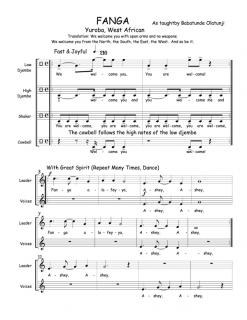Drum Circles
Part of Making Music Live

The phenomenon of drumming and drumming circles is still in its infancy. I predict that fifty years from now, world drumming will be standard curriculum in schools and will be a standard form of worship. Why?
Because drumming requires raised attentiveness, a level of focus that actually makes children better learners. It increases attention span and lets the emotions explode. Because drumming connects us with different cultures in a dynamic way, making rhythms come to life. Drumming creates community, a sense of belonging that is as primal as a mother's embrace.
Because prolonged drumming can lead to an altered state of consciousness, either in the form of a dream state or an adrenaline rush; states of mind that our ancestors needed to survive and evolve.
Milwaukee musician and educator Will Schmid developed a curriculum called World Music Drumming that consists of a series of guidebooks. Although Schmid originally created the curriculum for schools, it provides helpful direction to church leaders for how to prepare and teach drumming to children. His technique of speaking rhythms before playing them works especially well with children. For example, the complex djembe part of "Fanga," a song taught by Babatunde Olatunji of West Africa, becomes simple when spoken on the phrase, "We welcome you. You are welcome." That is the actual meaning of the song.
Drums are an ancient type of instrument and should be treated with great respect. The first thing children need to learn is a sense of ritual, even in the way they hold the drums. They must also learn that drums are not intended to be beaten for the sake of making noise. To teach this important concept, lay the drums in a circle and have the children stand outside the circle. During a moment of silence, explain that in parts of Africa the drum is actually a living spirit. When you play the drum it becomes a partner with whom you play a duet. You must treat the drum with the same respect you would treat any fellow spirit in this world. Then invite the children to stand quietly by a drum or percussion instrument.
Will Schmid's curriculum will help with the next steps of teaching children to make their first drum sounds and subsequent rhythms.